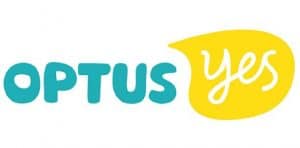Crisis Management or just crisis?
It’s been 28 days since the Optus data breach and their crisis management comms remain perplexing. A well written comms plan can make all the difference in how your brand is perceived in the face of a disaster.
In fact, there are case studies aplenty that highlight how desperately important immediate and regular communication is to brand preservation in a situation like this. Yet, as a customer, I’ve not heard a peep from them since that fateful day in September – other than a somewhat cryptic text message that was sent two days after the event.
The panic that must have unfolded at Optus at the time is unfathomable – nobody wants to be in their shoes. But as brand owners, their ‘deer in the headlights’ response has highlighted just how important it is to have solid crisis communication plans and why living your brand values and proposition, regardless of what happens, is paramount.
In a crisis, it’s all about communication.
Actually, if history has anything to teach us (thanks J&J’s Tylenol for the lessons), it’s about over-communication.
Optus (along with now an indeterminate number of hackers) has our email addresses so why haven’t they reached out beyond this initial ‘oops’ to their allegedly unaffected customer base?
Like most brands, Optus wants us to love them, to support them, to be part of their tribe. But at a time when we needed them to show their humanity and be personal with us during a very personal breach, to show us they had this in hand (or were working on it), to trust they’d do everything they could to fix this, they went quiet. And if the subsequent backlash for their brand is anything to go by, it might even be considered deathly quiet.
Here’s the kicker for me.
 Over the years, Optus has spent millions building a brand of ‘yes’. Like all good brand custodians, they painstakingly built a strong brand identity seeking an emotional connection with their audience and in their case, pushing positivity and optimism. Their brand proposition and “Declaration of Yes” was about thinking differently and saying “…yes to doing everything humanly possible to help our customers feel good about being with us”.
Over the years, Optus has spent millions building a brand of ‘yes’. Like all good brand custodians, they painstakingly built a strong brand identity seeking an emotional connection with their audience and in their case, pushing positivity and optimism. Their brand proposition and “Declaration of Yes” was about thinking differently and saying “…yes to doing everything humanly possible to help our customers feel good about being with us”.
It won me over (I love a good brand proposition), and millions of others. But you can’t just have a shiny brand identity document and some clever ads. You have to breathe your brand identity to your core – in good times and in bad.
Yet, just like the apparent failings in their corporate governance, it seems they didn’t have a strong crisis management strategy in place either and have been left scrambling, trying to band-aid what is now a very deep wound to their brand.
And frankly, it takes more than a banner on your website, store posters and some FAQs to sure-up your brand’s strength and loyalty when crisis hits. Their customer base is hurting, frightened, and feeling their brand has let them down (still).
Without communication and respecting this was going to need more than a text message, any understanding folks may have had, has quickly dissipated. We expect our revered brands to have our backs, to be human with us, to be true to their stated vision and values – and that’s where Optus has dropped the ball.
It seems they’ve missed the point that in a crisis, the folks that will keep your brand safe are the loyal customers already saying ‘yes’.
A scroll through the Optus Facebook page shows the first post regarding the breach was 23 days after the attack. 23! Comments on the non-related posts prior have escalated with thousands of previously loyal brand supporters livid that their brand just wasn’t communicating with them.
When you use your social media account to “be a little more one-on-one” and regularly post seeking interaction and engagement, it’s equally as perplexing that at the exact moment they should have been using this medium to communicate and reassure, they went to ground.
Communication works
I had the privilege of seeing a brilliant CEO in action some years back when some pretty frightening things were afoot in the media about the brand he was heading up. His, and the brand’s, immediate and consistent communication with the audience was inspiring. They communicated every single day through the crisis. Every day. Even when there was nothing new to report, they did anyway, keeping the rumours at bay and the ship steady. The brand made it through, fears were allayed, and the incident became more of a speed bump than a crisis as a result.
Conversely, as Optus customers, unless one of the seriously breached folks (and even then, communication has been scant), we’ve heard nothing directly. Nothing to assure us being their customer is wise. Nothing to allay any fears. We’ve been left to do our own research (and we know how dangerous that is), hunting for clues and hating their brand a little bit more every day as the fear sets in and the random scam calls start coming in.
What a waste of their advertising dollars to date for a whole swag of their customers who no longer believe in the power of ‘yes’ and who definitely do not feel good about being with them.
You have to breathe your values and vision
Optus’ brand values include “customer focus” and their vision is “to lead Australia in outstanding customer experience”. A company’s values and vision should be the beating heart of their organisation – not just words on a page that tick a box.
Real, fundamental foundations for your brand that you base all your decisions and actions upon. Sadly for Optus, when push came to shove, the lack of connection back to their foundations has been palpable.
It’s so frustrating to see a brand that’s done such an awesome job of building its identity and connecting on an emotional level for customer acquisition, forget that customer retention, especially in a crisis, is paramount.
All this being said, I wouldn’t wish this sort of stress on anyone in a brand team (it’s bad enough being the customer). I feel for them and hope their brand can make it through the other side of this. But if ever there was an example of when to get on the front foot and over-communicate with your tribe when the proverbial hits the fan, this is it.
If you don’t have a crisis management plan and comms strategy that aligns with your brand vision and identity already, this should be good impetus to write one.
Want to chat to us about setting meaningful brand values and vision, or a communications strategy for your business? Please shoot us a note and we’ll be all ears.









